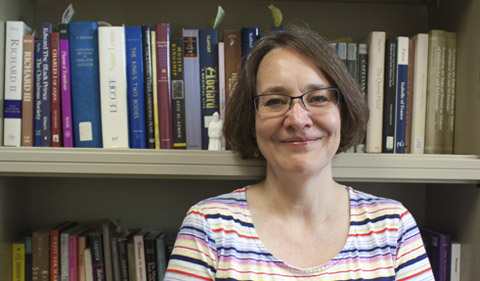“The difficulties of studying what no longer exists are legion,” writes Dr. Miriam Shadis, “and are particularly acute in the realm of women’s history, but … the absence of a discourse of visual imagery does not mean that this imagery never existed, nor that queens’ patronage did not play a role in forming or expressing reginal identity.”
And queenship in the beginnings of the Portuguese monarchy differed from what historians have found elsewhere in Europe, she writes.
Acts of will and acts of God have long ago combined to obliterate both the art and architecture of early Portugal—including iconography related to its first kings and queens. “Various forces of creation and destruction form the lens through which historians must try to perceive … men’s and women’s relationships to those objects and buildings.”
Shadis’ chapter on “The First Queens of Portugal and the Building of the Realm,” in Women as Makers of Art and Architecture (edited by Therese Martin. Leiden: Brill. 2012) examines the relationship between royal women’s patronage—the support that queens provided to artists and architects—and the foundation and legitimization of the Portuguese monarchy and realm. Shadis continued her research last summer in Portugal.
“Their patronage followed the trajectory of other royal patronage in Iberia and the wider European Continent: the introduction of the Cistercian Order (especially women’s houses), linked to a particular devotion to the Virgin Mary, and then patronage of the new Mendicant Orders in the early 13th century. The ‘queenship,’ however, of royal daughters (acknowledged as heirs and queens by their fathers) played an even greater role in the integration of the church and state of the new realm of Portugal, as these women founded, patronized or joined a number of monasteries there,” Shadis wrote in an essay on Reassessing the Roles of Women as Makers of Medieval Art and Architecture in 2011.
Shadis examines the patronage practices of the first queens of Portugal, from the hereditary Queen Teresa (d. 1130) to the queens Mafalda and Dulce (wives of Afonso Enriques and Sancho I respectively). Her work “addresses a serious lacuna in scholarship on the relationship of the ‘making’ of art and architecture to the ‘making’ of the state, examining the foundation of the kingdom of Portugal as the context for the production of material culture, primarily religious architecture. It appears that the common goal of state formation and the establishment of a ruling lineage created an arena in which men and women—rulers, religious, artists and architects—collaborated in vision and practice. Nonetheless, the result was often ‘feminine,’ with royal daughters as directors, reformers and members of new foundations, creating a religio-political space for royal women.”
“In Portugal,” she suggests in the chapter, the character of royal women’s patronage—especially in the realm of monumental building—both secular and religious, was shaped by the queen’s status and changed qualitatively as the nature of queenship itself changed.
Shadis also published an article on “Women and Las Navas de Tolosa” in the Journal of Medieval Iberian Studies: Special Issue on the 800th Anniversary of the Battle of Las Navas de Tolosa. 4.1 March, 2012. She examined this watershed medieval battle in the Christian Reconquista on the Iberian Peninsula with a lens different from the traditional patriarchal narrative. She looked at the impact the battle might have had on women’s experience over time—an experience which varied not only according to gender but also according to class and religion in the high middle ages.
“The events surrounding Las Navas de Tolosa certainly affected the history of a number of individual women, from the queens, noblewomen or townswomen who sent their fathers, husbands and sons on crusade, to the camp followers who inevitably followed a major army, the potential female participants of the battle and certainly women who were taken captive and potentially enslaved after the battle. It is less clear how the experiences of individual women, if they can even be discerned, may be translated into a generalization about the significance of the battle for the history of Iberian women,” Shadis writes. “Taking the long view, however, may help. It is possible to say something about 13th century Christian women’s experience in settling new (or newly taken) towns, and likewise about Muslim or Jewish women’s experience living under Christian rule: a history which was affected by the shift in power perhaps inaugurated by Las Navas de Tolosa.”




















Comments